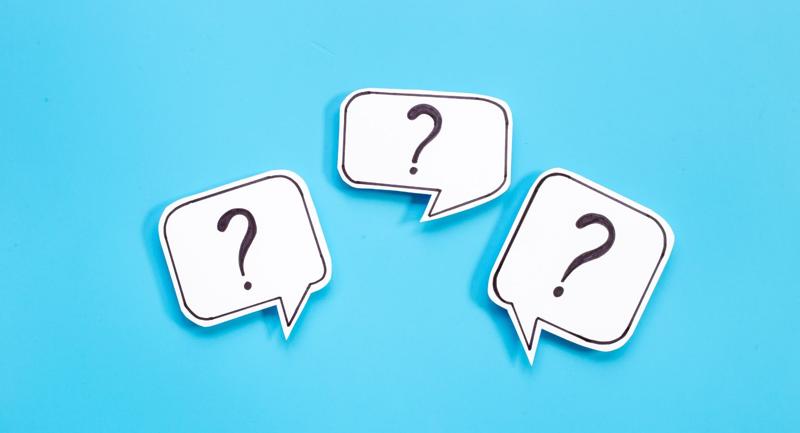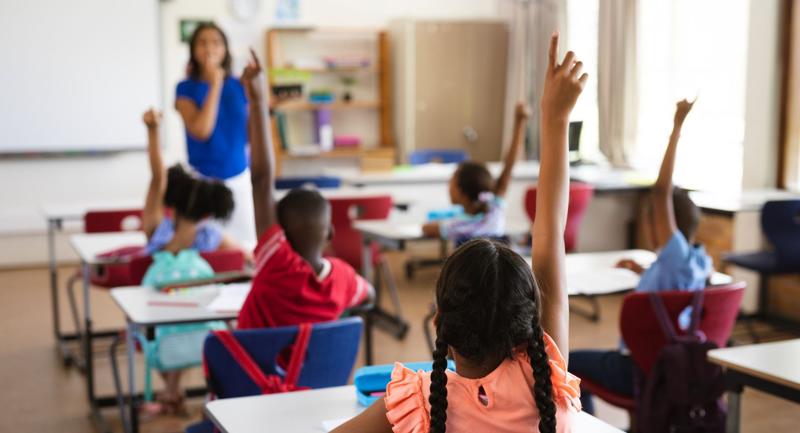The challenges teachers are facing this school year are incalculable. Constant schedule changes. Social distancing regulations. Another virtual platform to learn. It can all feel so overwhelming.
But there is one frustration that sticks out the most. One that makes us question our belief in our teaching abilities. One that makes us feel as if we are no longer making an impact: Not knowing how to engage our students anymore.
In the shift to virtual learning, many of the strategies that we had previously used to draw our students' attention and to keep them in awe have fallen by the wayside.
I've found it helpful to take a step back and remember what we already know about engaging learners. There are three types of student engagement: emotional, behavioral, and cognitive (Fredericks, Blumenfeld, & Paris, 2016). When students are engaged in all three components, they can learn at their highest capability. Through examining each of these components in action within my virtual classroom, I developed the Virtual Engagement Framework.
Emotional Engagement
Students are emotionally engaged in the learning process when they hold a set of attitudes and values that are beneficial to their growth. They feel a sense of belonging among their peers and throughout the school. Teachers are able to bolster student emotional engagement in our virtual classrooms through establishing strong learning communities where every student feels valued, developing strong relationships with each individual student, and perpetuating a growth mindset among students.
Learning Community
Although building a strong learning community in a virtual platform can seem significantly tougher than when students are not physically in the classroom, there are some strategies that we can utilize to strengthen our students' sense of value and acceptance. By consistently putting our students' social-emotional well-being at the forefront and building a sense of unity in our virtual classrooms, our students will be able to thrive.
Ideas to try:
Establish team-building routines and rituals by having students take on class roles. In our virtual classroom, I've assigned each of my students a specific task to complete each day. For example, one of my students facilitates a check-in discussion, while another student facilitates the closure activity by asking each student what they learned or accomplished within the class period.
Complete social-emotional check-ins at the beginning of class. These check-ins (for example, having students share two words that describe how they are currently feeling or selecting a picture to demonstrate their emotions) can be completed through digital forms, the chat feature, and daily online journals.
Provide opportunities for students to share their interests with their peers. By giving our students unstructured time to play Show and Tell, Would Your Rather, or Peer Interview activities, we allow them the chance to connect to their classmates and to develop a deeper sense of class community.
Strong Relationships
We may not be able to interact with our students in the same ways as before, but we know that building a strong, supportive relationship with every one of them is the foundation to their success. There are many ways that we can virtually dive into our students' interests, strengths, struggles, and passions. Through digital discussions, shared documents, and online activities, we can continue to show our students that we truly believe in their capabilities and that they can always come to us for support.
Ideas to try:
One on one or small group virtual meetings with students. In our school, we set up two half-hour time slots in which each staff member connects weekly with a small group of at-risk students. This time is used to get to know them as individuals, identify their strengths, and discuss their struggles.
Give students opportunities to collaborate. By using video discussion platforms, breakout rooms, and shared documents, students can build strong peer relationships and push each other to the next level.
Write down and incorporate student interests and strengths into class activities. One fantastic way to allow students to build upon their passions is through Genius Hour Projects. A.J. Juliani developed a Genius Hour Blueprint for educators to utilize these projects to promote inquiry and research, student choice, and autonomy.
Growth Mindset
From unfamiliar digital platforms to balancing their own schedules, students are facing new challenges. For many students, these pressures can seem overwhelming and may push them to the point of wanting to give up. However, by incorporating strategies and opportunities for students to develop a growth mindset, teachers can help students to embrace the challenges that are thrown their way and to persist in the face of setbacks.
Ideas to try:
Instruction of growth mindset elements. In Mindset, Carol S. Dweck outlines five key elements of developing a growth mindset: embracing challenges, persisting in the face of setbacks, seeing effort as a path to mastery, learning from criticism, and finding inspiration in the success of others. In my class, we have class discussions surrounding a chosen "quote of the week" that ties to developing a growth mindset.
Optimize technology to provide feedback and praise. Through social media posts, virtual discussion boards, digital class shout outs, and emails to parents, educators can demonstrate their pride in their students and inspire them to reach even greater heights.
Give the students opportunities to learn the value of challenges. My students' motivation increased when I invited them to participate in scavenger hunts and class competitions.
Behavioral Engagement
Behavioral engagement refers to our students' participation and efforts in completing class tasks and assignments. To increase student involvement and attentiveness, there are a few strategies that we can implement in our virtual classrooms, such as collaboratively developing virtual class norms, utilizing restorative practices over digital platforms, and using technology to better communicate with our students' other supporters.
Class Norms
Many aspects of virtual learning are brand new to our students (and to us!). As with any activity, it is important for us to teach our students what is appropriate and what is not acceptable. Students are more likely to take ownership of their actions and to meet expectations when they are involved in the process of developing class norms. By implementing student-created norms, posting them in the virtual classroom, and consistently reviewing their importance, teachers create greater routine and consistency, leading to increased engagement.
Ideas to try:
Collaboratively develop class norms for each portion of the virtual learning environment. Have students reflect and share their answers to the question, "What words describe the kind of classroom you would like to be a part of?" From there, guide students in developing norms for video chat sessions, breakout rooms, and shared documents.
Have students sign contracts for class norms. By putting a contract in writing and having all members of the class sign it, students develop a stronger sense of community and ownership of their behavior.
Consistently review the established norms. One strategy that I've seen successfully utilized is creating visuals for each class norm to refer to throughout the class. Posting these in your virtual classroom can be a continuous reminder for students of the positive behavior you expect.
Restorative Practices
Restorative practices, which shift away from using rewards and punishments to using an approach that gets to the root cause of the issue and builds on human connection, can play an integral role in promoting positive behavior in our virtual classrooms. When we take the time to strengthen our classroom culture through deep class discussions, our students can identify with other viewpoints and think critically about their own thoughts and actions. When our students make mistakes, we can meet with them one on one or in small groups through a virtual platform to strengthen relationships, to help them take responsibility for their actions, and to devise a plan of action to repair the harm.
Ideas to try:
Implement virtual community circles. These virtual circles are an opportunity for students to openly discuss their thoughts and concerns, leading to deeper, meaningful relationships in the class.
Use virtual resources to teach mindfulness, self-awareness, and self-regulation. Virtual mindfulness videos, digital gratitude activities, online coloring pages, and personal reflections are excellent resources that can be used to build student social-emotional skills. We have a district resource site that includes mindfulness videos and activities. Meet with students in a one-on-one meeting to discuss behavior issues. In Hacking School Discipline, the authors outline five restorative steps to take when working with a student: Initiate, Empathize, Analyze, Execute, and Reflect (Maynard & Weinstein, 2019). By utilizing this blueprint, we can allow our students to learn and grow from their mistakes.
Collaborate with Other Supporters
Collaboration with parents and other student supporters is an essential component of student success. In the shift to virtual learning environments, many public school districts have reported that an average of 22 percent of students were missing class each day (Sawchuck & Samuels, 2021). It is imperative that we try to work with all of our students' supporters to get them the help they need.
Ideas to try:
Maximize family connection through technology. Sending digital parent tips, classroom news, shoutouts, and Snapshots of the Week are excellent examples of how some teachers are reaching out to their students' families during this time. One resource that many parents loved was a Google Guidebook for Families and Students. Create a shared parent contact log. In my school, we utilize teachers, counselors, home-school coordinators, and teaching assistants to provide extra support for students who are struggling. Each staff member serves as a mentor to four or five students and meets with the small group weekly to build connections with them.
Establish mentors for students in need. Utilize counselors, home-school coordinators, and teaching assistants to provide extra support for students who are struggling.
Cognitive Engagement
Helping students actively connect to the material they are learning requires three components: authentic learning experiences, higher-order questioning, and teachable learning strategies.
Authentic Experiences
By making purposeful decisions about how to utilize technology in our classrooms, students can see the value and make connections with the content that they are learning. They have access to endless information at the touch of a button. We can use these resources to spark their interest and boost motivation.
Ideas to try:
Higher-Order Questioning
In a virtual classroom, we need to continue to move students from a place of simply regurgitating key information to a level of higher-order thinking. Teachers can deliberately plan higher-order questions using question starters and incorporate project-based learning, passion projects, and collaborative documents. Ideas to try:
Use Bloom's Taxonomy to plan higher-order activities prior to the lesson, which outlines six levels of student learning: Remember, Understand, Apply, Analyze, Evaluate, and Create (Anderson and Krathwohl, 2001). The Bloom's Digital Taxonomy Pyramid provides ideas for using online tools. Provide multiple means of demonstrating knowledge. The Universal Design for Learning Guidelines (2018), developed by CAST, outlines three principles to consider when designing differentiated learning experiences, including multiple means of engagement, representation, action and expression.
Allow students to track progress in developing personalized focus skills. The Partnership for 21st Century Learning developed a framework that outlined twelve skills that are crucial to student success: critical thinking, creative thinking, collaborating, communicating, information literacy, media literacy, technology literacy, flexibility, initiative, social skills, productivity, and leadership (2019). I have students document their daily action plan at the beginning of class and record the action steps that they took at the end.
Learning Strategies
Through a virtual learning model, many students are taking on a larger responsibility in their own learning than ever before. By taking the time to show the students the neuroscience behind their learning and demonstrating the use of specific learning strategies, such as rehearsing, persistence, and connecting to prior knowledge, we give them a jumpstart in taking ownership.
Ideas to try:
Teach students virtual communication skills through establishing talking norms. By clearly outlining discussion expectations in virtual platforms, students are aware of how they should interact with their teachers and peers. We set norms to use the chat feature responsibly.
Show students how their brain works and processes new information. Embed metacognitive strategies, such as rehearsing, self-questioning, and summarizing, into your classroom to allow students to become self-aware of learning approaches that work for them. After they complete tougher assignments, my students write learning reflections, where they choose a learning strategy that they used.
Model learning strategies by thinking aloud while performing an academic task. We can model curiosity, passion, open-mindedness, and risk-taking for our students.
Regardless of the challenges that we are face, we can still focus on employing strategies that will allow us to engage our students on emotional, behavioral, and cognitive levels.








